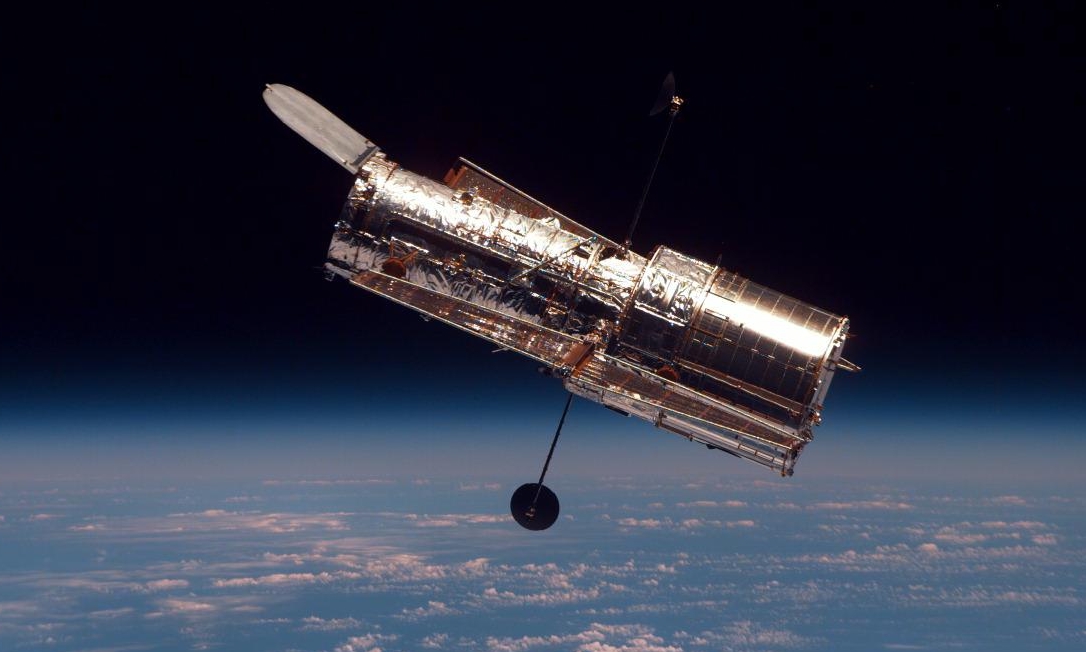 |
This NASA electronic camera image from STS-82 shows HST just after release during the second servicing mission in February 1997. |
 |
This NASA electronic camera image from STS-82 shows HST just after release during the second servicing mission in February 1997. |
A powerful telescope beyond the atmosphere promised vast improvements in our knowledge of almost every area of astronomy. It still seemed a very distant prospect when I began my research career. After a long period of lobbying, development, and planning, the Hubble Space Telescope was carried into space in April 1990 by the space shuttle Discovery during mission STS-31. Indeed, the Hubble telescope has revolutionized virtually every field of astronomy, from planetary science through stellar evolution to gamma-ray bursts. It has been my remarkably good fortune to be involved in programs using HST data going back to its first year of operation.
It's almost too painful to recount - the announcement of significant spherical aberration in the primary mirror, and the realization that some kinds of anticipated HST science (quasar host galaxies, for example) simply could not be done in that condition. Still, some kinds of programs could be carried out, particularly UV spectroscopy and some kinds of imaging for which deconvolution with the telescope's strongly peaked and stable (although degraded) point-spread function. Working with Rogier Windhorst and collaborators, I did some deconvolution of faint radio galaxies from redshifts z=0.3 to 2.4, to study how well we could reconstruct their structures. Much of this was done with the sigma-CLEAN algorithm, adapting the basic procedure from radio astronomy to the different behavior of photon noise in optical data. In 1991, this took a Cray supercomputer (how times have changed!). I show here a couple of examples from this project. The radio galaxy 53W044 at z=0.31 is revealed to have a nearby companion and a faint, smooth stellar disk. The bright star in the same field furnishes a very convenient reference for the blurring pattern (known in the business as the point-spread function or PSF). These I-band images cover a region 20 arcseconds square, and are shown at the same intensity scale for comparison.
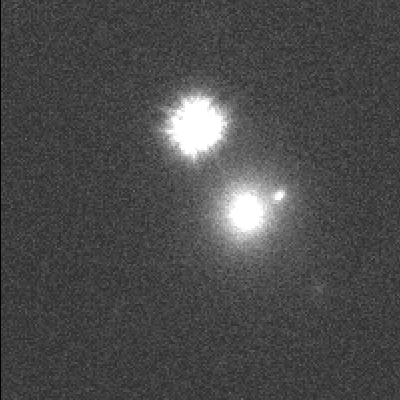 |
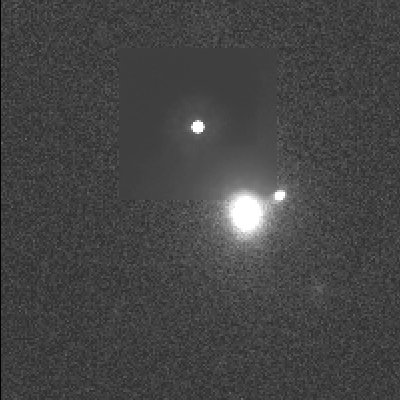 |
We continued this work in the third cycle of HST programs, now using the parallel imaging and spectroscopic capabilities of the observatory to seek evidence of how radio galaxies evolve with cosmic time. Evolution should be most pronounced in the ultraviolet, where the hotter and shorter-lived stars are most prominent. We chose pairs of radio galaxies from the Leiden-Berkeley Deep Survey with appropriate redshifts, selected so that while measuring the UV spectrum of one galaxy with the Faint-Object Spectrograph (FOS), we could obtain a visible-light image of another using the Wide Field/Planetary Camera (WF/PC). Then, about six months later, we could reverse the order and end up with images of the whole sample, important to interpreting the intensity of the spectrum, at no additional cost in telescope time. In fact, these fields also let us begin a statistical study of the pairing and merging of faint galaxies as a by-product.
The real possibilities of the Hubble telescope, of course, were evident only after the 1993 refurbishment mission on STS-61, which installed optics to correct the images for the two spectrographs and Faint-Object Camera, plus replacing WF/PC with WFPC2. We reobserved the area around 53W002, to prove the structure of this weak, distant radio galaxy, which we hoped could serve as a sample of what elliptical galaxies looked like soon after formation. After ground-based observations showed that 53W002 had companions at the same redshift, we were able to get a long set of WFPC2 observations through a filter which isolates Lyman alpha emission at this redshift (the filter having been intended to study methane absorption on giant planets). This hit the jackpot, turning up about 18 objects that could be gas-rich companions, the richest high-redshift grouping found to date. These objects were extraordinary not only in their UV energy output, implying brisk formation of massive stars, but in their small size, typically only a few thousand light-years in extent. Thus we termed them sub-galactic, with the idea that such objects (later turned up in some numbers in the Hubble Deep Field) might be the precursors out of which today's larger, more massive galaxies have been built up. For more details and image comparisons, see my Galaxy Building Blocks page or the press release from STScI.
As always when we're onto something this new and interesting, we've followed up on the discovery of these objects in several ways (including ground-based data from Kitt Peak and the NASA Infrared Telescope Facility. We've also used HST to explore how common these might be in other directions - how lucky were we to hit this grouping? We got several fields' worth of parallel data in the same filters, obtained while some other program was doing long spectroscopic exposures since we didn't care just what pieces of sky were searched, and found a few such compact blue emission-line galaxies (but never as many as in the 53W002 field). They do cluster, and this offers promise of tracing how clustering has developed over cosmic time. Later, we obtained near-IR observations using the NICMOS camera, to look at the older stars (if there are any) and the emission lines which started out being emitted as visible light. These spectral features are quite sensitive to the chemical composition of the gas and the amount of dust present, both of which can tell us about the history of these protogalactic youngsters. The spectra are turning out to be somewhat painful to analyze, so those results will be some time in coming in.
Closer to home, Ray White III and I have used WFPC2 images to study the role of dust in spiral galaxies. This has been a very contentious issue, with well-supported arguments suggesting that spiral galaxies are either fairly transparent or almost opaque. Which one is more correct makes a huge difference for how we interpret the light we see from galaxies, and what we might be missing in the background as we study quasars in the distant Universe. Following an extensive ground-based survey, we were able to image three pairs of overlapping galaxies using HST. Such overlapping galaxies offer a uniquely direct way to measure the amount of absorption from dust, without some of the assumptions about galaxy internal structure required by the statistical analyses that have been prevalent in the field. Two of these pairs include a spiral in front of an elliptical, and the third is a direct superposition of two spirals. See also the initial press release accompanying the first of these data. In later analysis, we included results from ISO and the JCMT to measure total dust masses in two different ways, with the comparison leading to interesting limits on how much dust could still be hiding in the cold or small structures that would elude easy detection. New results from the HST data themselves include showing that the extinction curve, and hence the population of interstellar grains, must be very similar in all these spirals to what we see in the Milky Way, and the finding that there is a lower size limit to the structures of dust that are important in absorbing background light (which had me, for the first time in my professional life, actually doing a fractal analysis).
By the time of the second servicing mission, STS-82, I had served on enough committees to get a pass to the "VIPs with kids" area. This was an especially spectacular predawm launch. This montage was done with a 220mm zoom lens. We could follow the orbiter well after separation of the solid-rocket boosters (which event is shown at lower right). The color difference between the brilliant orange of the SRBs and the blue of the liquid-fuelled SSMEs was clear.
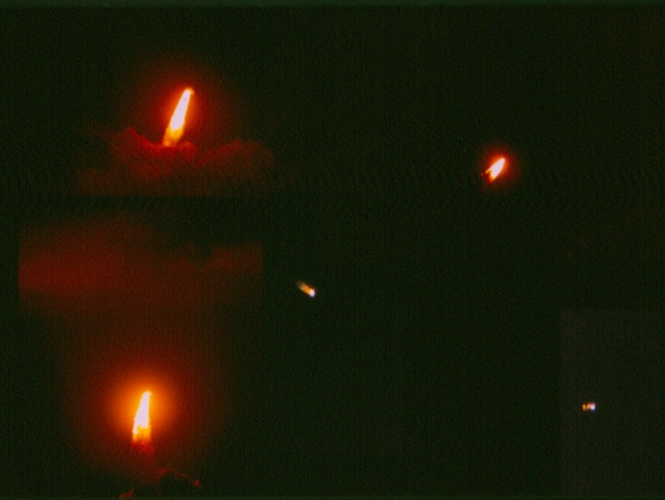
Hubble has indeed revolutionized most fields of astronomy. Students in AY101 these days wouldn't even know if I didn't sometimes point out where, since the results are so interwoven throughout the textbooks. Some examples of things I've been involved with:
 |
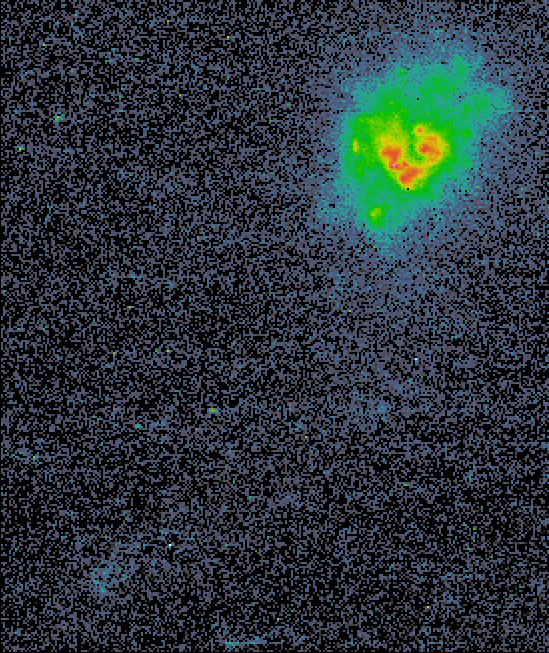 |
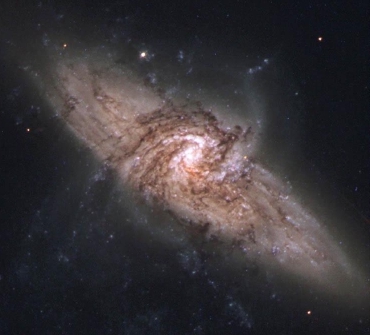 |
 |
 |
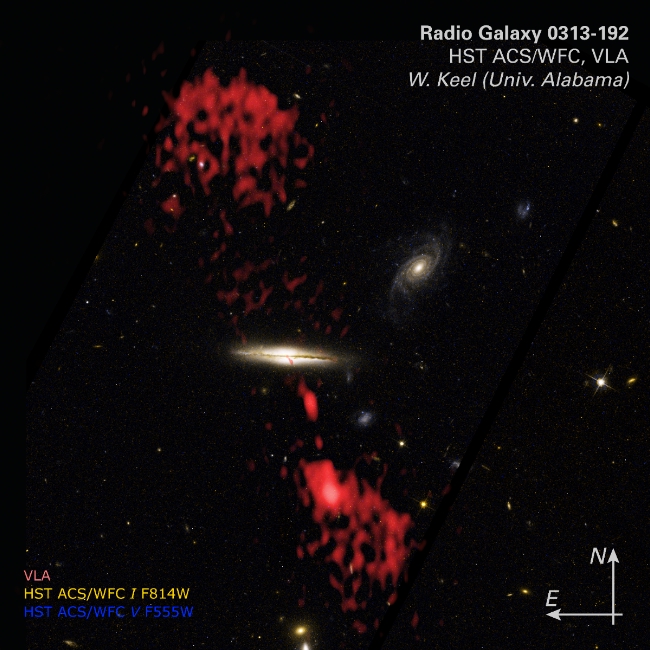 |
 |
Last changes: 4/2007 © 1999-2007